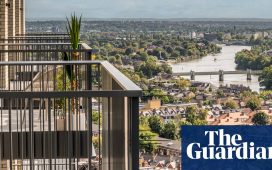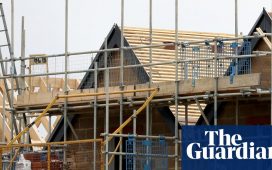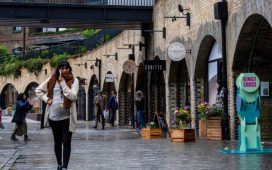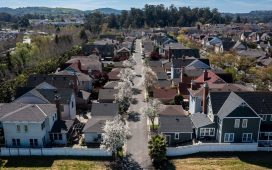As the purple-red light settles over the Athenian coastline at sunset, entrepreneur Chrysanthos Panas, owner of the restaurant and club Island, is reminded of his father’s daily mantra: “This is paradise.” The phrase, delivered each afternoon without exception, described a feeling that became familiar to Panas too: admiration for the beauty of his home of Vouliagmeni, a suburb on the southern rim of the Greek capital.
The area’s special beauty is no secret to Athenians. Although very close to the centre of Athens, about 20km south, turn towards the beach on Vouliagmeni’s avenue and the vibe changes. On one side of the street is the glittering sea, on the other rose bays, pine and palm trees. People sit fishing on the water’s edge, play beach tennis with wooden rackets, swim in small coves beneath Poseidon’s temple, or feast on freshly caught fish. Time feels like it is slowing down.
As far back as the sixth and seventh centuries BC, Ancient Greeks picked prime spots here to build temples facing the Aegean, dedicated to Apollo and Poseidon. By the 1960s, it was Athenians building and buying chichi summer homes. The Astir Palace Hotel in Vouliagmeni, with its bungalows by the water, hosted the rich and famous of Greek society. Maria Callas was a regular visitor to the area; Aristotle Onassis had a house in Glyfada, one of the coastal regions.
For decades, this coastline was virtually unknown to foreign tourists, who typically only experienced it briefly en route to the crowded port of Piraeus to board ferries to the islands.
But over the past few years, a major rejuvenation has begun along this long-overlooked 60km coastline from Piraeus to Sounio; it has become a highly covetable real estate destination for local and foreign investors. Alongside several five-star hotels, including a Four Seasons and the recently opened One & Only Resorts, this is also the site touted as the largest real estate project in Europe, The Ellinikon, which promises to be a “smart” city three times the size of Monaco.
At its heart the Foster + Partners-designed Riviera Tower, the tallest skyscraper in Greece at 200 metres, is beginning to rise.

It was in the 1990s that Panas and his brother founded Island, keen that the rest of the world should discover this special spot. It quickly became a landmark of the area.
But following the global financial crisis of 2008-09, and the exposure of the huge extent of Greece’s sovereign debt, a massive blow was dealt to the country. Greeks were reeling from high unemployment and a drop in GDP that would amount to more than 25 per cent before it began to recover in 2017. Faced with a 30 to 40 per cent fall in his revenues, in 2010 Panas began focusing on attracting international clients.
“Don’t just spend the night in the capital before heading to the Aegean Islands,” Panas’s advertising message read. “Spend an extra day in the city’s most beautiful part: The Athens Riviera,” he said, coining the term.
Like Panas’s informal rebrand, roots of the area’s current real estate project date back to 2010.
Shut out of markets, Greece needed international bailouts to stay afloat. The initial loans of more than €200bn given by European creditors and the IMF came with strings attached, including a series of contentious privatisations of prime state assets to repay the country’s mounting debt.
Arguably the crown jewel of those assets was a 6.2mn sq metre piece of land bordering the 3.5km stretch of coastline where the capital’s old airport, The Ellinikon, was once based. Abandoned in 2001, The Ellinikon was still littered with old aircraft missing doors, windows and wheels when it was sold. Its dilapidated sports facilities were a hangover from when it had briefly served as a sports venue during the 2004 Athens Olympics. And latterly, it had been used as emergency housing for migrants. Standing deserted, it served as a painful reminder of Greece’s economic difficulties. But it had potential.
In 2014, the Greek government sold the land to Lamda Development, a Greek construction conglomerate, for nearly €1bn. And paid off some of its debt. After a long period of political and bureaucratic stalling, construction finally commenced in 2021.
“This project started in an era when Greece was bankrupt. Now we are putting Greece back on the map, but for the right reasons this time,” says Odisseas Athanasiou, chief executive of Lamda Development, whose previous credits include building a luxury shopping centre in the north of Athens. The Ellinikon, he asserts with a developer’s polish, will be “a paradise city”.
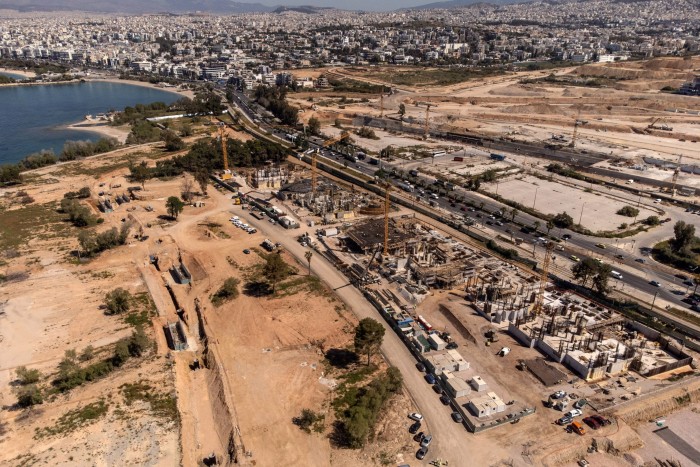
Although still very far from anything resembling paradise, 10 years on from the sale, progress is visible for the first time since the privatisation. In a vast construction site, the 200m Riviera Tower is taking shape. Each of its 173 apartments is expected to have a balcony or terrace. Many have feature pools and hanging gardens. Renders show its extreme height looming over surrounding buildings only a few floors high. The first floors of the beachfront villas are also appearing.
According to Lamda’s plans, the multi-use development will include schools, a 400-berth marina, a sports park, malls, a Hard Rock casino, a Mandarin Oriental Hotel and the largest coastal park in the world, a space bigger than London’s Hyde Park. “We are aiming to have our first residents by Christmas of 2026,” says Athanasiou, adding that there will be a total of 8,000 new homes upon completion.
As well as the Foster + Partners tower, other residences starting from €6,000 per sq m (not on the beachfront and without sea views) have been designed by international architects including the Bjarke Ingels Group, as well as others from Switzerland, South Africa, and the UK.
All 315 of the beachfront homes have already sold — totalling €1.1bn — leading to the planning of a further 500 apartments, 65 per cent of which have been reserved.
Lamda’s projected expenditure is between €8bn and €9bn, with property sales of more than €13bn or €14bn — the first stage of the project alone is estimated to generate revenues of €3.5bn. The developers also estimate that The Ellinikon will add 2.5 per cent to Greece’s GDP, create as many as 80,000 new jobs and attract more than 1mn annual visitors from around the world.
The mayors of the cities adjacent to this vast development are not as optimistic as Athanasiou. Part of The Ellinikon is located in the municipality of Alimos, a middle-class beachfront town once home to the Ancient Greek historian Thucydides. “We are experiencing heavy traffic every day, even at this early stage of the project,” says Andreas Kondylis, the three-times-elected mayor. “Imagine what will happen when more than 100,000 people are commuting.”
One would have expected that once a project of this scale was approved, plans would have been set in motion for new transport infrastructure. But other than a short underpass, plans to connect The Ellinikon to the city’s motorway have remained on paper. No plans have been reported for the extension of the metro to the neighbouring suburb of Glyfada.
“The full development of The Ellinikon will be delivered after 2030, so we have enough time ahead of us to study and mature additional projects that will serve the extra traffic,” says Akis Skertsos, minister of state.
Glyfada is a privileged enclave — close to the sea, next to a golf course — that’s popular with expats, Greek pop stars and footballers.
“The Ellinikon will change our lives a lot, it is just not clear to what extent” says Glyfada’s mayor Giorgos Papanikolaou. “We hope for the better. However, we are very anxious to resolve major issues that are still pending.”
Glyfada resident Yannis Kanistras is part of a residents group objecting to the construction practices, which they claim flout regulations such as keeping dust piles watered to prevent them from blowing about. “I don’t want to leave my home,” he says. “But I also can’t enjoy it. Construction could take more than a decade,” he laments. “But they say that we should not complain as the value of our homes has increased.”
During the debt crisis, the value of Greece’s real estate plunged by as much as 40 per cent. As the country shyly started to exit the crisis in 2017, the first new developments started to appear.
On the Athens Riviera, many of the old villas with large gardens filled with tall pine trees and bougainvillea were torn down and turned into high-rise apartment buildings, with rooftop pools and smart home tech. Foreign investors and property developers, especially Egyptian, Lebanese and others facing turmoil at home, began investing. “They love the weather, the lifestyle, the safety that Greece can offer,” says Minas Dimos, owner of Plasis, a real estate and development company specialising in the area.

The Golden Visa, a long-term residency visa first introduced in 2013, catalysed things further. More than 31,000 permits granted in its first decade drew investors from China, Turkey, Russia and the Middle East, yielding a total investment of more than €2.6bn into Greece.
Now, beachfront properties are being listed for as much as €15,000 per sq m.
“We are still uncertain how the market will react to the thousands of properties that will be released in a short period,” says Yannis Ploumis-Sotiropoulos, general director of Ploumis-Sotiropoulos, Greek affiliates of Christie’s International Real Estate. “I’m not sure if there will be demand for all this offer.”
The Ellinikon is only a small part of the 60km Athens Riviera. Many areas elsewhere in the region were once long neglected, left with relics of summer clubs, abandoned sport facilities and real estate developments. As consecutive governments scrambled to find ways to boost its growth, plans were set to revamp and develop stretches. But co-ordination across municipal lines has proved challenging.
On the coast of Attica, just 8km from the centre of Athens, the Stavros Niarchos Foundation Cultural Centre is an Athenian landmark designed by Italian architect Renzo Piano, and the home of the national opera and library. Since 2011, the foundation has donated €3mn to fund the development of a master plan to revitalise the area, which would include a park to connect the landmark to the beachfront. In 2016, the region of Attica announced the €464.4mn Faliron Bay Restoration Project, partly funded by the EU. Eight years later, the project’s first phase is yet to be completed. The latest calculations forecast completion of the whole project in 2029.
Meanwhile, in Alimos, the municipality north of The Ellinikon, the beachfront “breathing space” for its inhabitants, as its mayor Andreas Kondylis describes it, is under threat. “Our life is directly connected to the sea. We walk, we exercise there, it’s our only open space,” he says.
The beachfront here, like in many other municipalities, belongs to the Hellenic Public Properties Co, the arm of the Greek state that runs its real estate portfolio. Kondylis has been struggling since 2017 to take ownership of his municipality beach from HPPC, so he can clean, maintain and upgrade it.
“There has never been a common plan to connect and develop the Athenian Riviera,” he says. “Just individual initiatives that are not really long-lasting or based on synergies.” The HPPC says that it is still in deliberations with the municipality, trying to navigate a path that is a “win-win scenario”.
In Glyfada, mayor Papanikolaou managed to take ownership of the beach from the HPPC in 2017. Now the beachfront is a vibrant part of the city. Its beach umbrellas, showers, lifeguards, pedestrian walks and bike paths make it a far cry from the deserted, dirty beach it once was.
“From the moment we took over our beachfront we were able to create a holistic plan,” says Papanikolaou. Here you don’t have to pay exorbitant fees to enjoy a day by the water. “That’s what makes us different from other parts of the Riviera.”
The transformation of the Athens Riviera marks a new chapter for the Greek capital. But as the skyline begins to change, the central issue for all involved is finding the balance between progress and quality of life for its residents.
“We need to protect our natural beauty and our culture and highlight what makes us special,” says Panas. “Since antiquity this location is seen as unique. We should make sure we keep it this way.”
Eleni Varvitsioti is the FT’s Greece and Cyprus correspondent
Find out about our latest stories first — follow @FTProperty on X or @ft_houseandhome on Instagram



